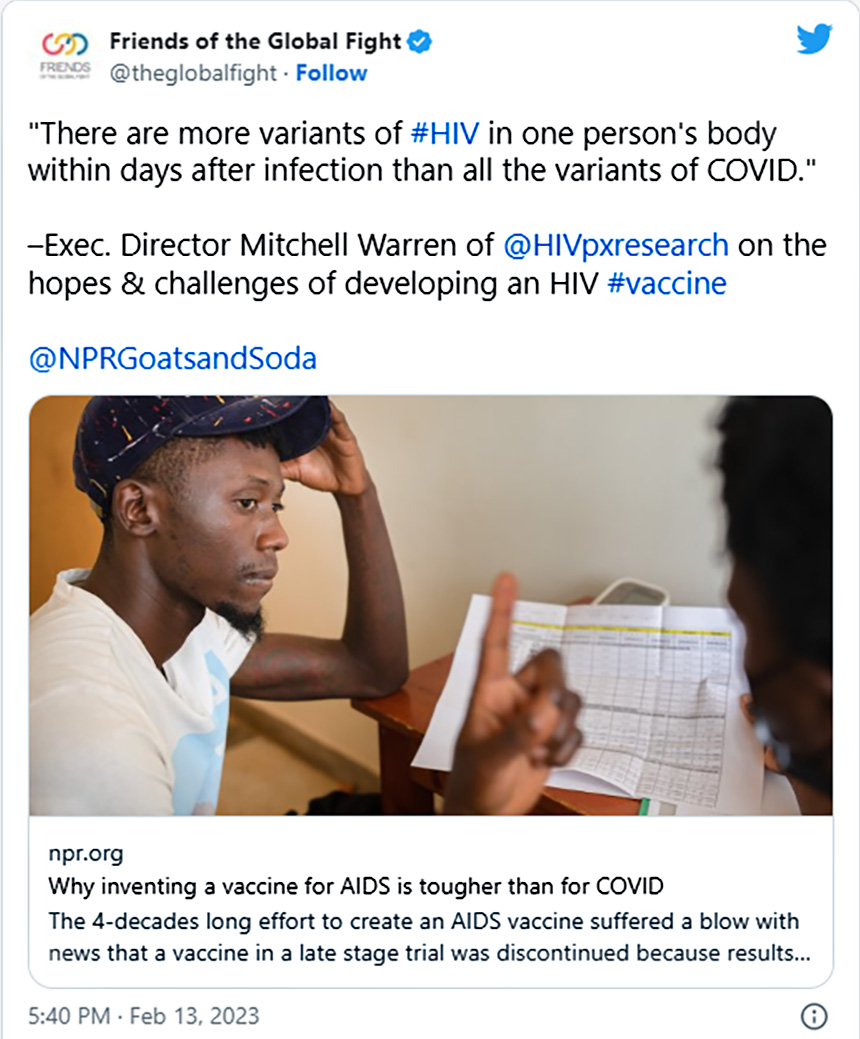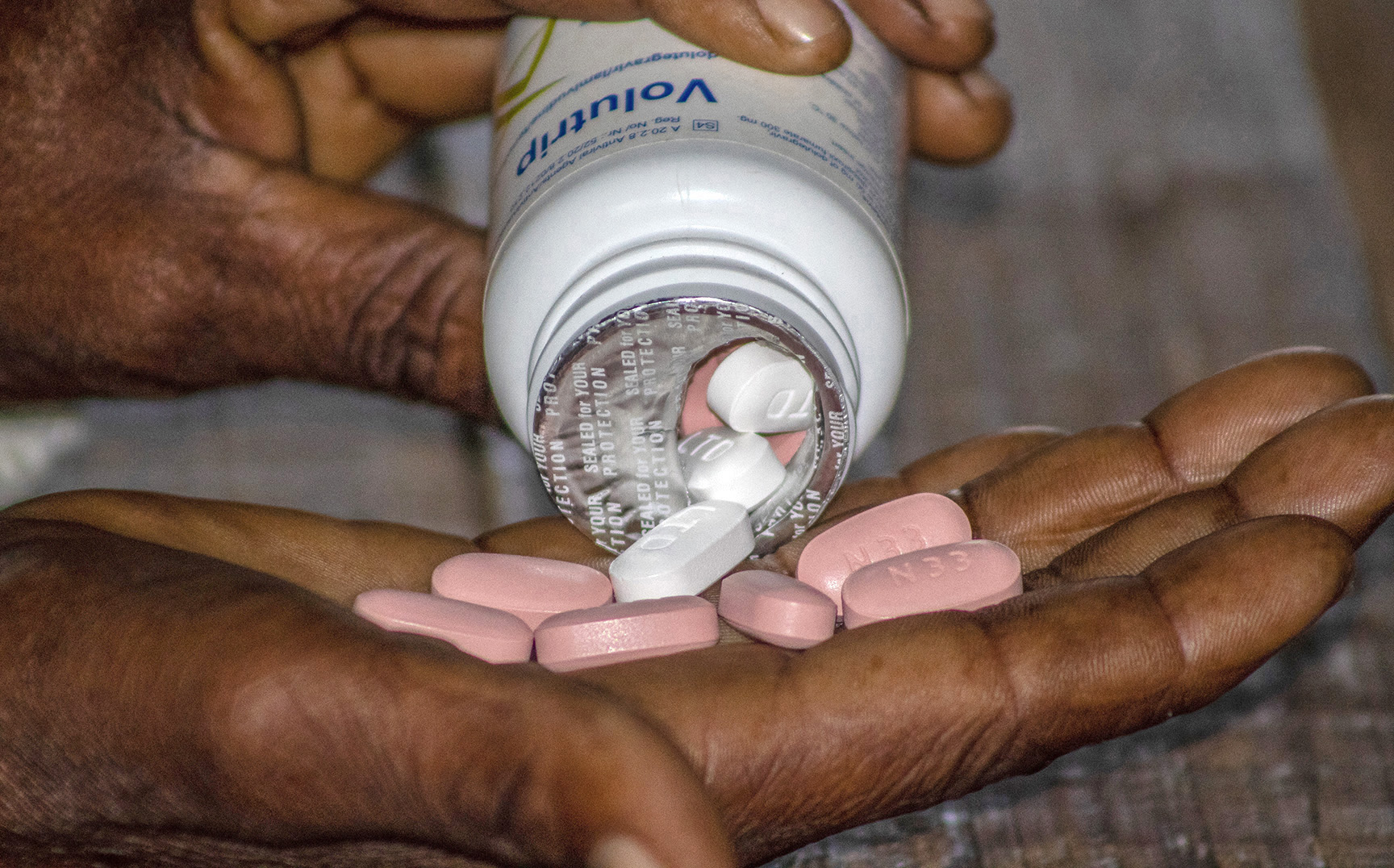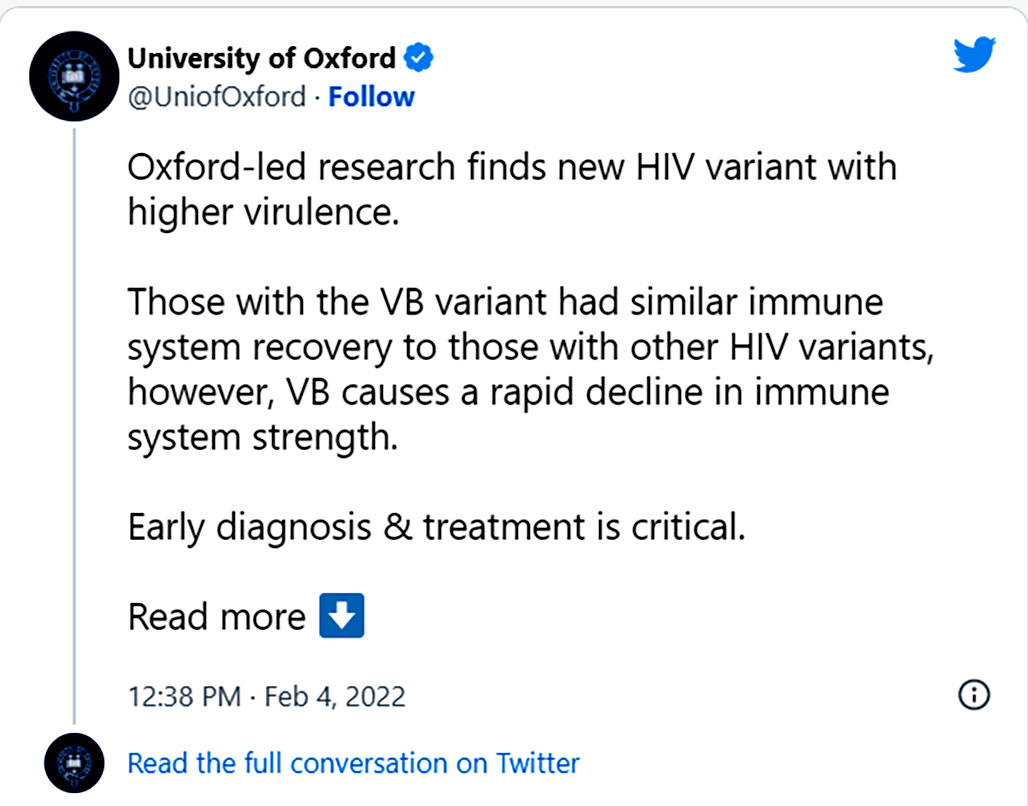SPOTLIGHT
Viral variants — we unpack the mutation differences between HIV and Sars-CoV-2

A study published last year on an HIV variant that has been circulating in the Netherlands for the last 20 years reminded the public of the existence of viral variants beyond Sars-CoV-2. Elri Voigt unpacks what we know about the HIV virus, its variants, and the study’s findings.
When a study published last year on an HIV variant that has been circulating in the Netherlands for the last 20 years made headlines around the world, it was a reminder that Sars-CoV-2 isn’t the only virus out there that is constantly mutating. Behind the headlines though, the story also offered a reminder of how different HIV is to Sars-CoV-2 with its Betas, Deltas, and Omicrons.
To appreciate the differences, some basic terms are worth revising.
“In virology, the terms variants, strains, and subtypes all describe genetic differences between viruses in the same grouping or species. There is a progression of how big the genetic change or differences are, with variants being the smallest difference, strains slightly more, and subtypes a much bigger difference,” explains Professor Eftyhia Vardas, a clinical virologist pathologist and the Head of Virology at Lancet Laboratories.
These genetic differences occur as a result of mutation in the virus. They occur frequently, according to Vardas, because viruses replicate quickly and their replication mechanism — primarily enzymes — makes frequent errors.
Some mutations are more beneficial than others.
Those that are not compatible with the virus’s survival are immediately selected out and thus are not replicated. While those mutations that are beneficial to the survival of the virus are selected and will be replicated. This, depending on how big the genetic difference is, leads to the development of new variants, strains, or even subtypes of a virus.
Highly mutagenic
Professor Francois Venter, the Executive Director of Ezintsha in the Faculty of Health Sciences at the University of the Witwatersrand, tells Spotlight that the HIV virus is highly mutagenic and in its stable phase can generate billions of viruses on a daily basis with at least one mutation present in each virus.
“One virologist put it to me like this — he said that within the week of infection, every known HIV patient has every known mutation to every known HIV drug even though they’ve never seen the drug, [it’s] just simply by chance,” Venter says. “Now the reason there’s not such a big deal is that when a virus gets a mutation, most of the time those mutations are so terrible that they just cripple or kill the virus. The virus can’t replicate.”
He likens this to zombies in a zombie movie that don’t move very quickly and thus aren’t very efficient at spreading the infection.
“Most of these mutations actually have a cost to the virus, so they either die or they [are] not as efficient as the originator virus. But… very occasionally they get better,” Venter says.
This ‘getting better’ is what is still happening with Sars-CoV-2, Venter says, where the virus is still mutating in ways that make it more transmissible. A study published in Nature, which was conducted in South Africa, demonstrated how the Omicron BA.1 and BA.2 subvariants had significantly higher attack rates than the previous Delta variant, meaning it infected more people in a shorter timeframe. This was despite there being previous immunity to Sars-CoV-2 due to previous infection or vaccination.
Two types of HIV
HIV might not have the same well-known alphabet soup of variants as Sars-CoV-2, but it has its own interesting virological history.
Venter says that there are two types of HIV. The type that is associated with the general major HIV epidemic is called HIV-1. The other type is called HIV-2 and is slowly becoming extinct, as it is much less transmissible than HIV-1.
Vardas explains that HIV-1 and HIV-2 are distinct species, with HIV-2 having a large genetic difference from HIV-1. They also emerged from different ancestor viruses.
“HIV-1 [evolved] from the simian immunodeficiency virus in chimpanzees (SIVCPZ) and HIV-2 from SIV from the Sooty mangabey monkey (SIVSM) and this significantly affects how they affect humans,” she says. “HIV-2 has decreased virulence and pathogenicity in that it doesn’t infect humans as well as HIV-1 does and it doesn’t cause as severe disease as HIV-1.”

The HIV virus is highly mutagenic and in its stable phase can generate billions of viruses on a daily basis with at least one mutation present in each virus. (Photo: IAVI / Spotlight)
Subtypes of HIV-1
Whereas we are mostly talking of variants when it comes to Sars-CoV-2, with HIV-1 we have already seen differentiation into several sub-types (which as we explained above, indicate larger changes than variants).
“There are four groups of HIV-1 (M, N, O, P),” Vardas explains, “[and] the majority of viruses are classified into the “M” or Major group.
“Within the HIV-1 group M, there are 9 different subtypes [classified alphabetically as] A-K, which differ genetically from each other between 25 to 30% and are found in geographically distinct places,” she adds. “The differences for HIV subtypes are relatively big, not enough to reclassify the viruses into a different species, but enough to affect how well the virus spreads and how well it responds to antiretroviral treatment.”

Explaining genetic difference, Vardas says HIV-1 has all of its genetic material represented on two identical strands of RNA held within the protein core of the virus. “The virus core is covered by a lipid-protein bilayer which has spikes sticking through it and which are used by the virus to attach to and infect host cells. Each bit of the virus is encoded by this RNA genetic material at the centre of the core. The arrangement of the genetic information on this RNA follows the same pattern for all HIV-1 subtypes, with each discrete section coding for each part of the virus when it reproduces within the host,” she explains. “So, the genetic differences amongst the subtypes are measured on the structural proteins of the virus envelope and the protein sticking out of the envelope (this is gp120). There may also be smaller differences between subtypes in the non-structural (or regulatory proteins) but these are not used as much for the classification of the subtypes.”
Within the nine subtypes from group M, according to Vardas, subtype C is the most predominant one globally, including in southern Africa. Someone could also be “superinfected” with more than one HIV subtype, which could impact the efficacy of treatment.
“There are also overlap subtypes or recombinants of viral subtypes circulating in certain populations, for example, recombinants of AD may occur in some countries. These are hybrid viruses that contain the genetic material of both subtypes in a patchwork and are known as circulating recombinant forms (CRF). About 98 CRFs have been sequenced globally and they are found predominantly in Africa and Asia,” she says.
Visit Daily Maverick’s home page for more news, analysis and investigations

Antiretroviral HIV medication. (Photo: Hoseya Jubase)
HIV variants and drug resistance
In practice, the antiretroviral medicines we use today are so effective that much of this viral complexity hardly matters. On the whole, if people take the treatment consistently, HIV becomes suppressed in the body and people with HIV can live long and healthy lives.
According to Vardas, HIV variants are not currently monitored in individuals on a large scale, only when treatment fails and resistance mutations are being looked for.
“It is too difficult, very expensive and the virus changes too quickly to monitor variants routinely in infected people,” she says. “We do monitor subtype or CRF changes in populations — those that may have an impact on disease virulence, pathology, and response to treatment.”
When asked how HIV variants tie into the development of drug resistance, Vardas explains that drug-resistant variants are created by mutations that occur due to suboptimal therapy. This can be caused by things like “limited drug classes, pill burden, toxic effects, late initiation of therapy, and treatment non-compliance together with continuing transmission in high-risk communities”.
“There are specific mutations in circulating viruses that confer drug resistance and drug resistance mutations are transmissible from one individual to the next. So, the overall population burden of resistance is contributed to both by the emergence of resistance in treated individuals and by the transmission of resistance,” Vardas says.
According to Venter, in the event that the HIV mutations are actually efficient, the class of anti-retroviral (ARVs) drugs currently in use across the world are so potent that the mutations won’t get a chance to spread.
In South Africa, the recommended first-line treatment is a three-in-one combination tablet that contains the drugs dolutegravir, tenofovir, and lamivudine. “It’s almost impossible for this virus to have even the faintest chance [to mutate], and every time the virus raises its head to actually develop the mutations, these three drugs just climb in and kill it immediately,” Venter says.
When asked about the effect that late initiation of treatment might have on the potential for HIV to mutate into drug-resistant variants, he explains that, so far, they haven’t seen that this has an effect. For individuals who initiate treatment very late clinicians are still able to suppress the virus.
But this doesn’t mean that no one is monitoring the situation.
“At the moment, it’s not that we’re sitting on our laurels. Everyone’s looking and is nervous that at some stage something’s going to crop up [with] a resistant virus, but we haven’t seen it yet,” Venter says.
When asked if it is likely that new HIV variants could develop, given the effectiveness of HIV treatments available, Vardas cautions that “new variants develop all the time and these impact the effectiveness of treatment, [but] new subtypes that may impact virulence and pathogenicity are very rare”.

The ‘VB variant’
A prime example of an HIV variant was described in a 2022 study, which identified a variant that had been circulating in the Netherlands for just over two decades. Though publication of the study led to some sensationalist headlines, the variant isn’t really something to worry about.
Though the variant of HIV-1 Sub-type B, known as the “VB” variant, was described as “highly virulent”, it had nothing like the dramatic impact we’ve seen from new Sars-CoV-2 variants. The context was also different in that HIV is sexually transmitted and can be treated with highly effective antiretroviral therapy.
By highly virulent, says Professor Christophe Fraser, Moh Family Foundation Professor of Infectious Disease Epidemiology at the Nuffield Department of Medicine at the University of Oxford, they mean this variant has a more damaging health impact than is normal for HIV. He is also the principal investigator of the Beehive project. The study found 109 individuals (107 of which were in the Netherlands) with this variant, which emerged in the late 1980s and 1990. The VB variant spread more quickly when compared to other HIV variants during the 2000s, but has declined since about 2010. (This press release and press kit outlined two of the study author’s explanations of the findings.)
What was different about this variant was that before treatment, those with the VB variant showed a faster progression to “advanced HIV” than those participants with other HIV variants. Those with the VB variant had a viral load of 3.5 to 5.5 times higher, had a CD4 decline that was twice as fast, and had an increased risk of transmitting the virus to others. Thus making this variant more virulent than the others it was compared to in the study.
However, according to Fraser, after treatment, those with the VB variant responded similarly to those with other variants. “The VB variant does not have mutations that prevent successful treatment,” he says.
“Before this study, the genetics of the HIV virus was known to be relevant for virulence, implying that the evolution of a new variant could change its impact on health. Discovery of the VB variant demonstrated this, providing a rare example of the risk posed by viral virulence evolution,” Fraser says. “Studying exactly how this variant causes more immune system damage than other variants do could reveal new targets for next-generation drugs.”
Chris Wymant, a Senior Researcher in Statistical Genetics and Pathogen Dynamics at the University of Oxford and one of the study authors explains that the public should not be alarmed about these findings, as the discovery of this variant highlights the importance of existing guidance that those at risk of acquiring HIV need to have access to regular testing to allow for early detection and immediate initiation of treatment.
“The VB variant of HIV provides a concrete example for the study of virulence evolution for viruses generally, which has been widely studied through theoretical means with few real-world examples to consider,” he adds.
Monitoring efforts
All this raises the question of whether we should more actively be monitoring for new variants such as the VB variant.
According to Vardas, there is much room for improvement when it comes to efforts to monitor drug resistance in different HIV variants in South Africa and on a global scale.
“Resistance testing is very expensive and so it is certainly more available and implemented more frequently in the private sector than in the public sector. There are some research projects that look specifically at sequencing HIV-1 in subgroups of patients, for example, men who have sex with men or sex workers, but population-based HIV molecular epidemiological monitoring is not something that is available all the time,” she says.
When it comes to monitoring HIV subtypes in South Africa, she says, “Molecular epidemiological studies for HIV-1 are ongoing in South Africa to track and characterise HIV-1 subtypes and their characteristics. However, the scientific attention and funding given to the tracking of these viruses is no way near as intense as it has been for Sars-CoV-2.”
Venter is more optimistic.
“We [in South Africa have] got some of the best virologists and virology researchers in the world… they monitor this stuff all the time. To my mind, the reason I don’t worry about it as a clinician is that I kill the virus. My drugs do the job… We should still worry as virologists and we watch it but it’s not really of clinical concern at the moment as it is with Covid-19,” he says. “It might change and we obviously don’t take it for granted, but there’s no concern as yet from my side.”
He adds that the country is monitoring for the emergence of new HIV variants or variants that are drug-resistant and that South Africa’s monitoring for diseases through the NICD, in general, is excellent. DM/MC
NOTE: Professor Francois Venter is quoted in this article. Venter is a member of Spotlight’s Editorial Advisory Panel. The panel provides the Spotlight editors with advice and feedback on the quality and relevance of Spotlight’s public interest health journalism. The Spotlight editors, however, remain editorially independent and solely responsible for all editorial decisions. Read more on the role and purpose of the panel here.
*This article was published by Spotlight – health journalism in the public interest.



















Comments - Please login in order to comment.